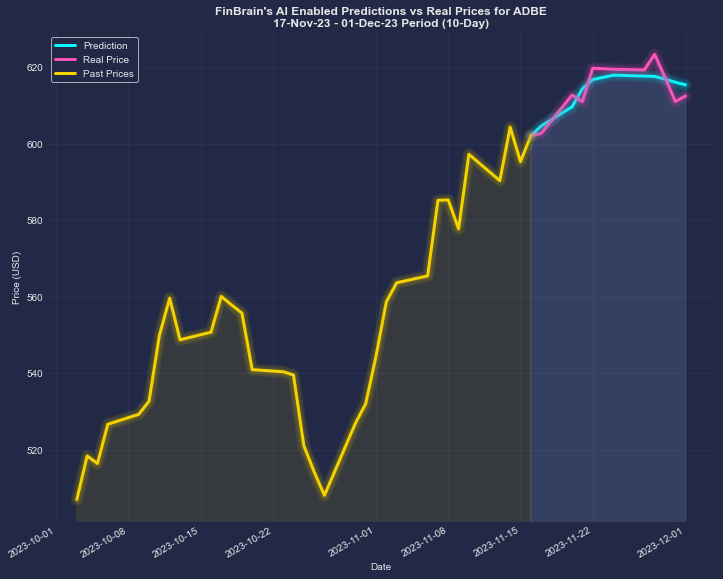20 Handy Tips For Deciding On AI Stock Analysing Sites
20 Handy Tips For Deciding On AI Stock Analysing Sites
Blog Article
Top 10 Suggestions For Evaluating The Strategy Customization Of Ai Stock Predicting And Analyzing Trading Platforms
AI software for predicting or analyzing stocks offers various options for customization that allow users to modify their platform to meet their specific trading objectives in terms of risk-taking, as well as market conditions. A platform that has a range of options for customization will improve your trading. Here are the top 10 methods to evaluate the ability of platforms to tailor their strategies:
1. Evaluate Pre-Built Strategy Templates
A variety of templates to choose from - Check to see if there are pre-built strategies that cater for different styles of trading.
Simple to use: Consider the ease of modifying and apply these templates according to your needs.
Performance history: Make sure that the platform has previous data on performance that can be used to create the strategic plans that have been pre-built.
2. Assessment Customized Strategy
Drag-and-drop tools: Look for platforms that offer intuitive drag-and-drop interfaces to create customized strategies.
Coding options: Check if the platform supports customized code (e.g., Python, R or any other scripting languages) for advanced users.
Flexibility - Ensure that the platform you select allows you to establish rules for the entry and exit of your business, as well as parameters for risk management, and other key elements of your strategic plan.
3. Check for Backtesting Capabilities
Historical data: Determine if there are enough records to backtest your strategies.
Customizable settings: Be sure you have the capability to modify settings during backtesting.
Performance metrics: Find out whether the platform has detailed performance metrics, for example, win rate (e.g. Sharpe ratio), drawdown, and other metrics for strategies that have been tested back.
4. Evaluate Real-Time Strategy Testing
Paper trading or simulation Make sure the platform supports paper trading modes, which allow you to test trading strategies in real-time and without risking money.
Live testing - See if you are able to test strategies using small amounts to see how they work.
Real-time Adjustments: Test whether you're able to make adjustments in real-time according to market conditions.
5. Integrate Integration and Technical Indicators
Indicator Library: Determine that the platform includes an indicator library that is technical (e.g. moving averages, RSI or MACD).
Custom indicators: Ensure that you have the ability to import or develop custom indicators to match your strategies.
Combination of indicators Check to see if the system supports combining multiple indicators for complex strategies.
6. Check for Risk Management Tools
Stop-loss/take-profit: Ensure the platform allows you to set stop-loss and take-profit levels within your strategies.
Position sizing. Verify whether you have rules in place for how to manage the risk (e.g. the amount you set per portfolio, percentage).
Risk-reward rate: Determine if the platform permits setting specific risk-reward rates for strategies or individual trades.
7. Evaluate Multi-Asset Strategy Support
Asset classes: Make sure the platform supports strategies across multiple asset classes (e.g. ETFs, stocks, options and forex).
Strategies for cross-assets: Determine whether you're capable of designing strategies that combine various asset classes.
Market coverage - Make sure that the platform is covering the markets you are in (e.g. US and international markets or copyright and more.).
8. Assess Automation and Execution
Automated trading - Make sure that the platform is capable of automating strategies that are based upon established rules.
Order types - Check that the platform supports a variety of order types for execution strategies (e.g. stop market, limit or stop).
Latency: Make sure that the platform has a low latency when trading, particularly if you are using high-frequency strategies.
9. Take a look at the Strategies Optimization Tools
Parameter optimization: Make sure the platform offers tools to optimize the parameters of your strategy (e.g. grid search and genetic algorithm).
Machine Learning Integration: Determine whether a platform is able to integrate machine learning to improve and refine strategy.
Assessment of scenarios: Determine whether your platform is capable of testing various strategies to deal with different market conditions, including bearish, bullish or volatile.
Review the Community Feedback and User Reviews
Feedback from users is essential in determining the effectiveness of the platform.
Community forums Find out if there's an active user community who are willing to share their strategies and ideas.
Support resources for users - Make sure that the platform includes tutorials and documentation for users to develop and enhance strategies.
Bonus Tips
Trial period - Use the free trial to test strategy customization capabilities.
Scalability: The platform needs to be able to support more complex trading strategies as you evolve.
Customer support Find out if there is support available for questions or concerns related to the strategy.
Follow these tips to assess the AI platforms' stock prediction and analysis ability to customize strategies. If you do this, you will ensure that you select a platform that matches your needs for trading and enables you to implement and refine your own strategies. A platform offering powerful customization options will allow you to adjust to the changing market conditions and enhance the performance of your strategy. See the recommended linked here on using ai to trade stocks for website advice including ai for trading, trading ai, ai trading bot, invest in ai stocks, best ai copyright, best ai stock, ai day trading, trading ai bot, ai stock trader, best ai copyright to buy and more.
Top 10 Ways To Evaluate The Regulatory Compliant Of Ai Stock Forecasting/Analyzing Trading Platforms
The regulatory compliance aspect plays an important aspect in evaluating AI platforms to predict stock prices and analyze. Compliance ensures a platform's operation within the legal frameworks. The data of the users is secure and financial regulations are complied with and minimizes the chance of legal problems. Here are 10 best tips to assess the regulatory compliance of these platforms.
1. Verify the validity of your license and registration.
Regulatory bodies: Make sure the platform is licensed and registered with the appropriate financial regulatory bodies (e.g. SEC in U.S.A., FCA UK, ASIC Australia).
Broker partnerships: If the platform incorporates brokers, verify that brokers are licensed and properly regulated.
Public records: Visit the regulatory body's website for the platform's registration status and any previous violations.
2. Assess Data Privacy Compliance
GDPR If a platform is operating within the EU or providing services to customers in the EU the platform must comply with the General Data Protection Regulation.
CCPA for Californians, check compliance with California Consumer Privacy Act.
Policies on handling data: Read the privacy policies of the platform to make sure it clarifies the methods by which data from users are collected as well as how it is stored and transferred.
3. Examining Anti-Money-Laundering/AML measures
AML policies - Ensure that the platform's AML policies are robust and effective to detect the existence of money laundering.
KYC procedures: Determine if the platform uses Know Your Customer (KYC), which verifies user identities.
Examine the platform's monitoring of transactions. Does it track transactions and report any suspicious activity to authorities?
4. Check for Compliance With Trading Regulations
Market manipulation: Ensure the platform has safeguards to stop market manipulation like spoofing or wash trading.
Types of orders: Verify that the platform is compliant with regulations pertaining to different types of orders (e.g. no illegal stop-loss hunt).
Best execution: Ensure that the platform adheres to the best execution methods to ensure trades are executed for the best price.
5. Cybersecurity Compliance:
Data encryption: Verify that the platform is secure for users' data during its travel and also when it's in storage by encrypting it.
Incident response - Verify the platform's plan to respond in case of data breaches or cyberattacks.
Certifications: Determine if the platform has cybersecurity certifications (e.g., ISO 27001, SOC 2).
6. Transparency Evaluation and Disclosure
Disclosure of fees - Make sure the fees are fully made public, including extra charges or hidden costs.
Risk disclosure: Verify if the platform provides explicit risk disclosures, particularly for high-risk or leveraged trading strategies.
Performance reporting: Ensure that the AI platform is transparent and provides exact performance information to its AI model.
7. Check for Compliance with International Regulations
Trans-border trade If you are trading internationally, ensure the platform complies with rules in all the jurisdictions relevant to you.
Tax reporting: Verify if the platform provides tools or reports that aid users in complying with tax regulations (e.g., FIFO rules in the U.S.).
Sanctions compliance - Make sure that the platform is compliant with international sanctions and does allow trading only with nations or entities banned.
8. Examine Record-Keeping and Audit Trails,
Transaction records: To meet regulatory and auditing reasons, make sure that the platform has complete records of all transactions.
Logs of user activity - Check that the platform logs all user activity including logins to the platform, trades executed as well as any changes made to your account settings.
Audit readiness: Determine if the platform has the necessary documentation and logs in the case an audit by a regulatory agency.
9. Check for whether you are in compliance with AI Specific Regulations
Algorithmic trade rules If the platform for trading supports algorithms, check that it is in compliance with the rules of MiFID II for Europe or Reg. SCI for the U.S.
Bias and Fairness: Verify that the platform is monitoring, and mitigates, biases within its AI models to ensure fair trading.
Explainability: As stipulated by certain regulations, the platform must provide clear explanations of AI-driven predictions and decisions.
10. Review User Feedback and The Regulatory History
User feedback: Read user reviews to gauge the reputation of the platform for compliance with regulations.
The history of regulatory compliance - find out if the platform is associated with any prior penalties or violations of regulations.
Third-party inspections: Determine if the platform is subjected to regular third-party inspections in order to ensure the platform's compliance.
Bonus Tips
Legal consultation: Think about consulting an expert in the field of law to examine the platform's conformity to relevant laws.
Trial period: Try the demo or trial version for free to evaluate the platform's conformity features and documentation.
Customer support: Check whether the platform is able to provide assistance to customers who have issues or concerns relating to compliance.
If you follow these guidelines, you can effectively assess the regulatory compliance of AI stock predicting/analyzing trading platforms, ensuring you choose a platform that operates within legal frameworks and protects your rights. Compliance not only reduces legal risks but also builds confidence and trust in the service of the platform. View the top find for ai stock trading for website recommendations including ai stock trading, invest in ai stocks, incite ai, ai stock prediction, ai trading software, copyright ai bot, invest in ai stocks, best ai for trading, ai stock trading app, ai day trading and more.